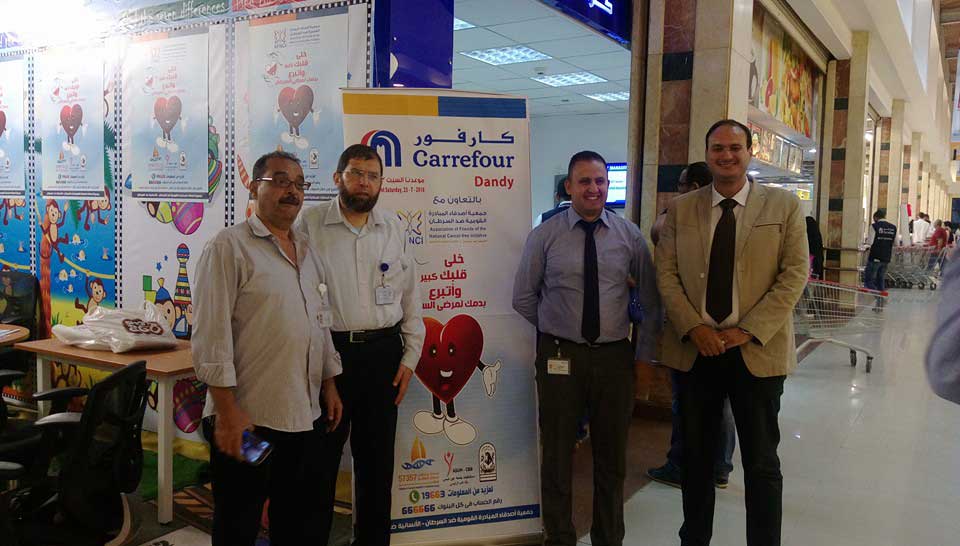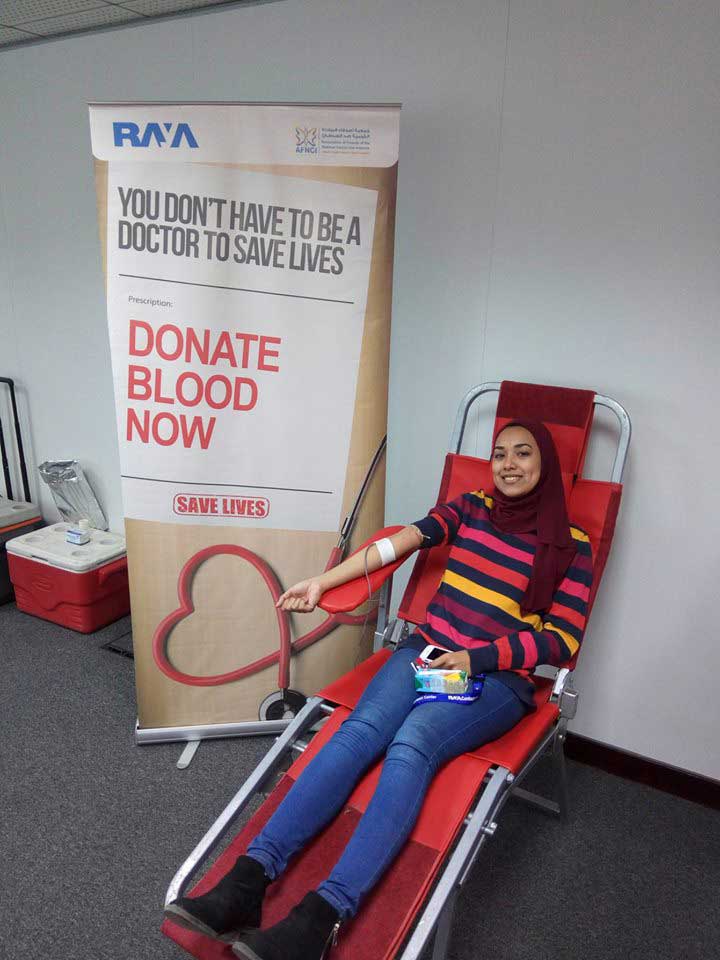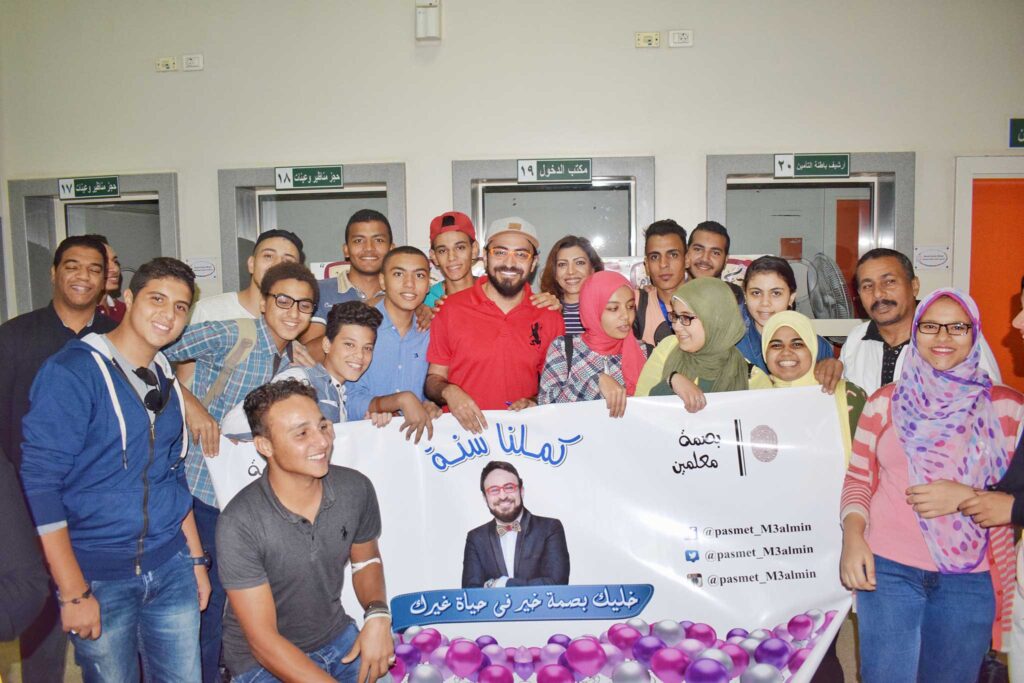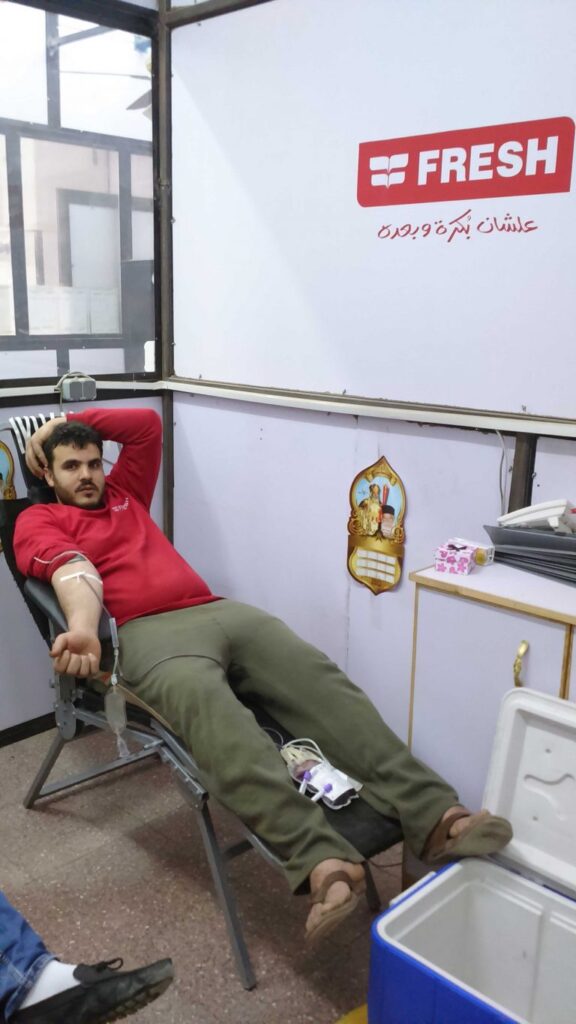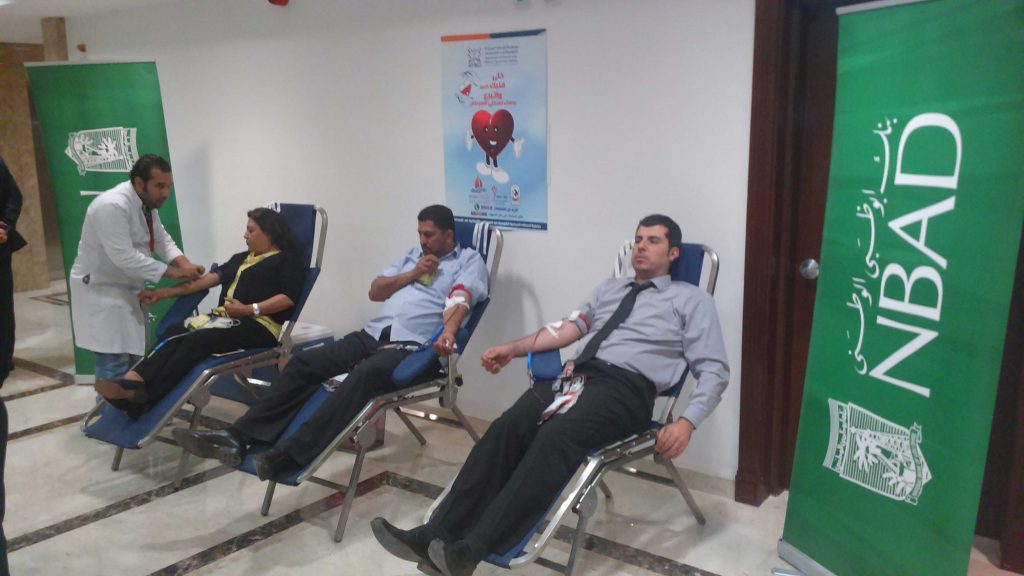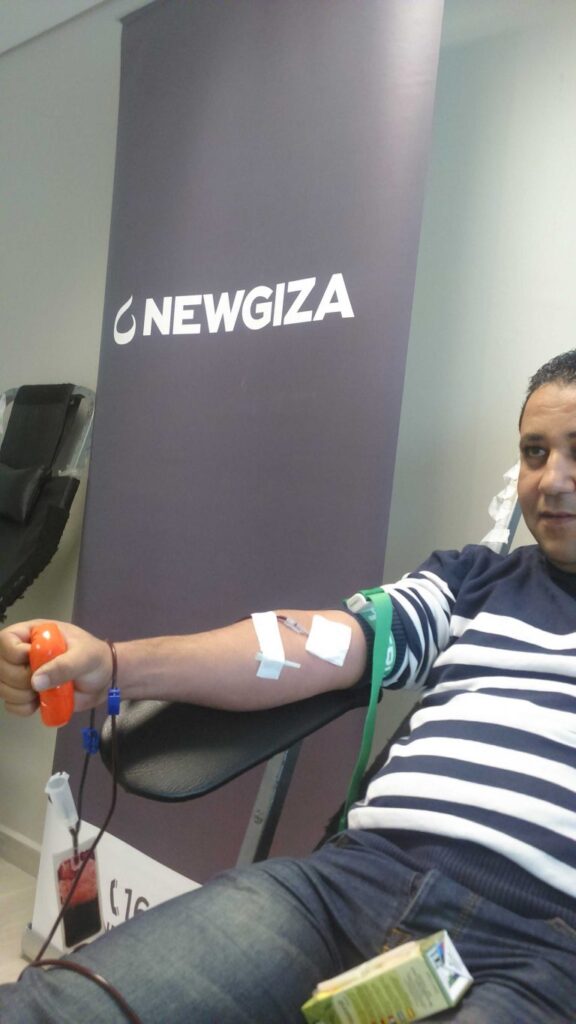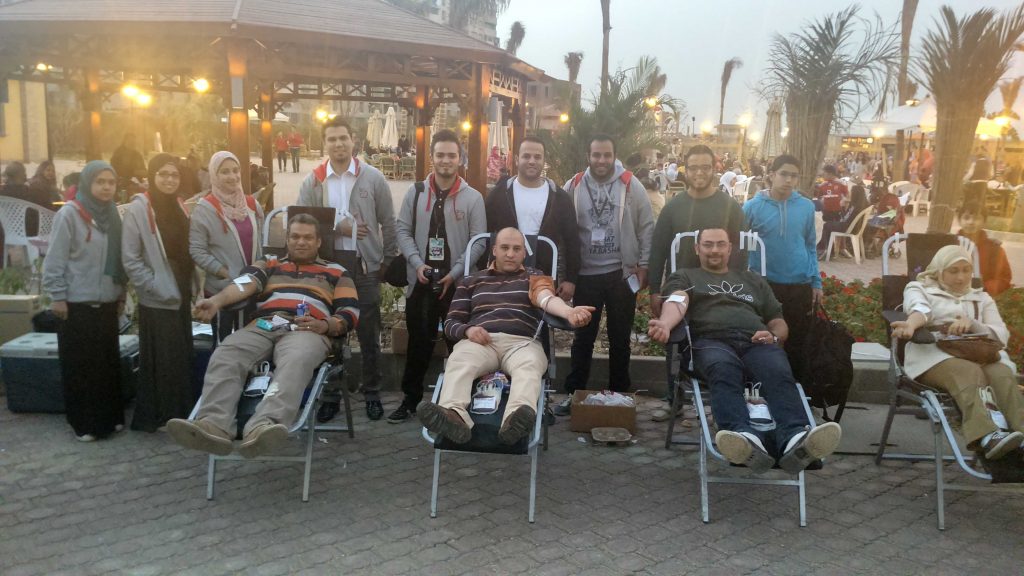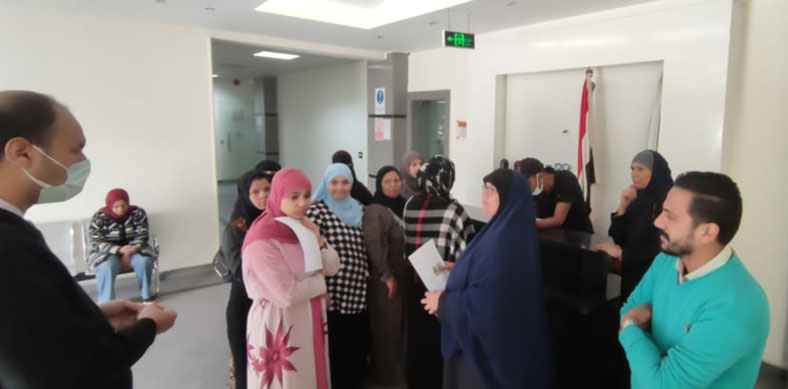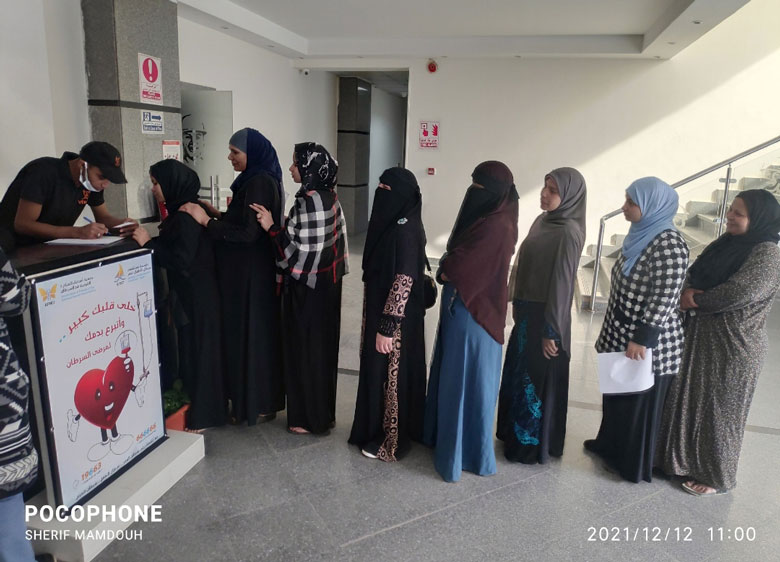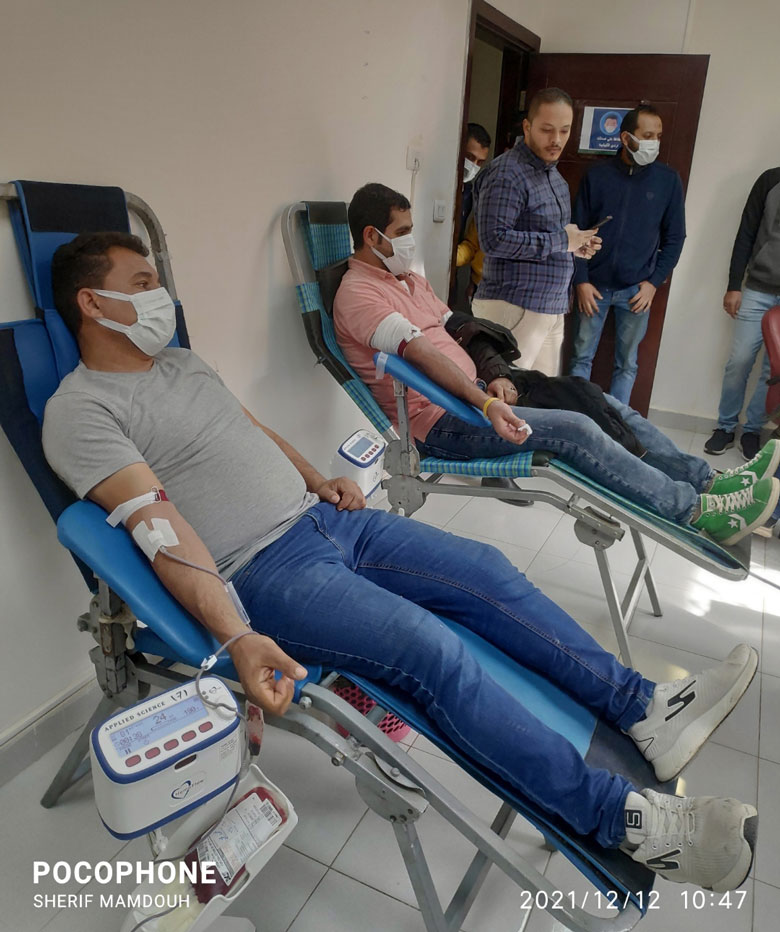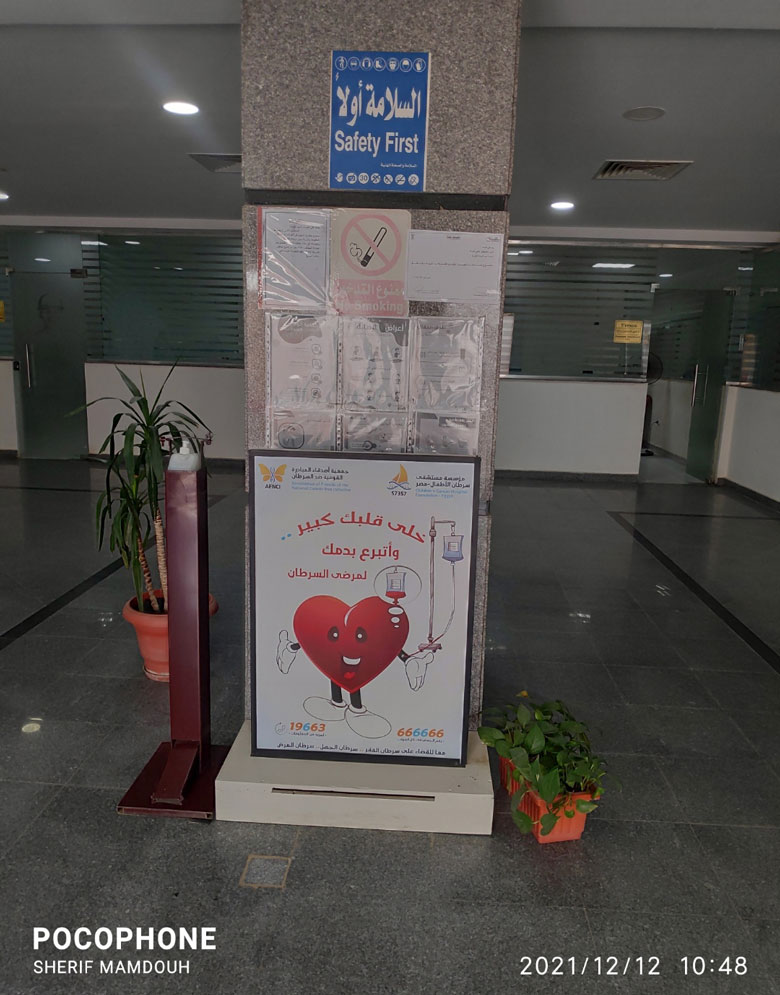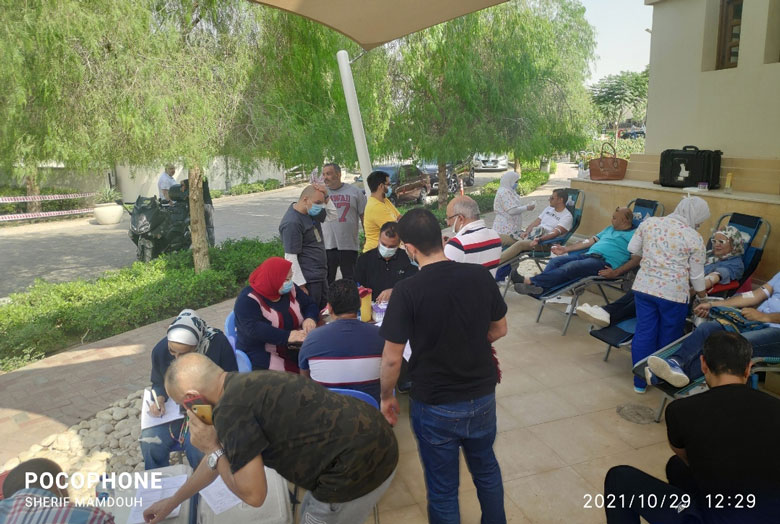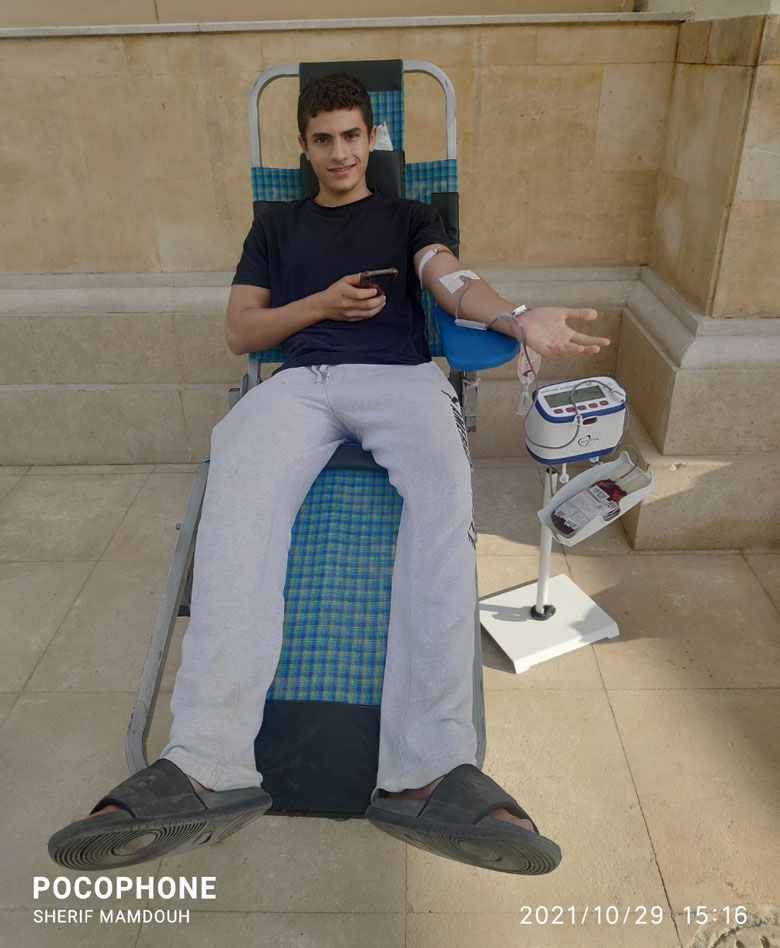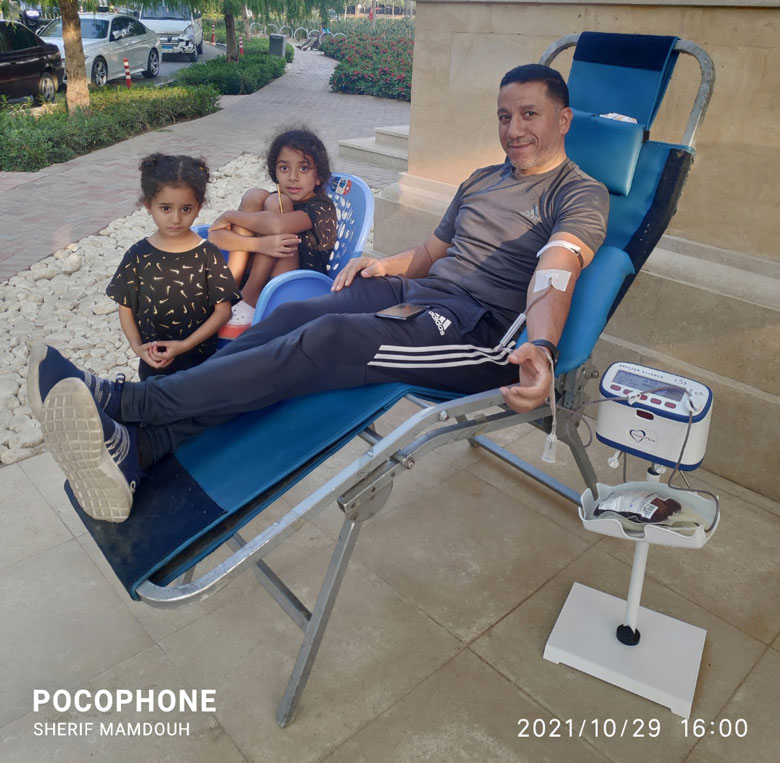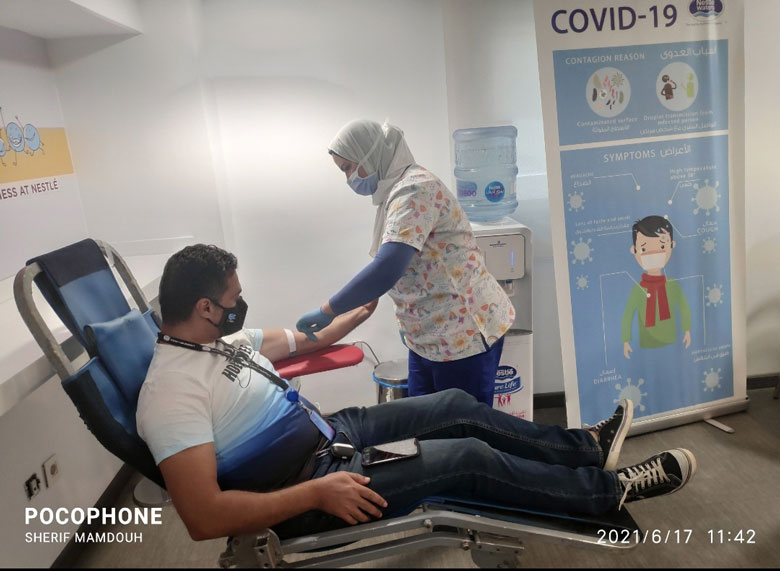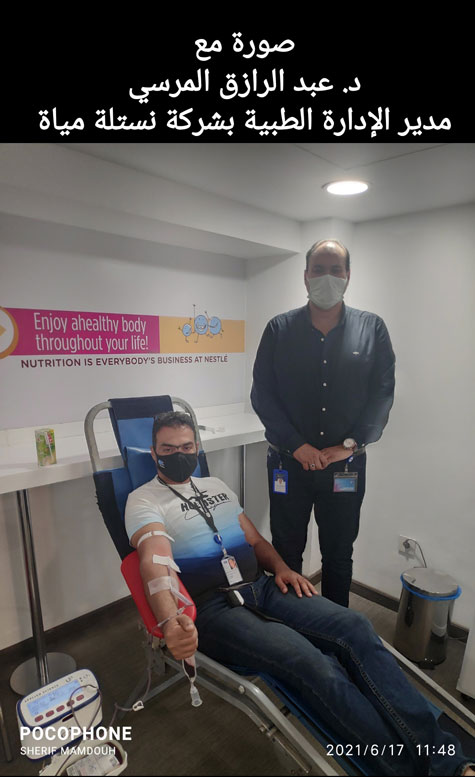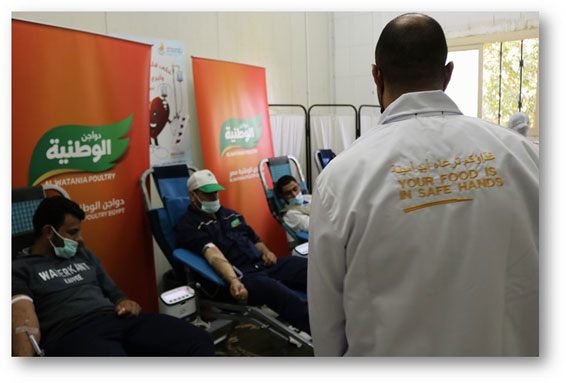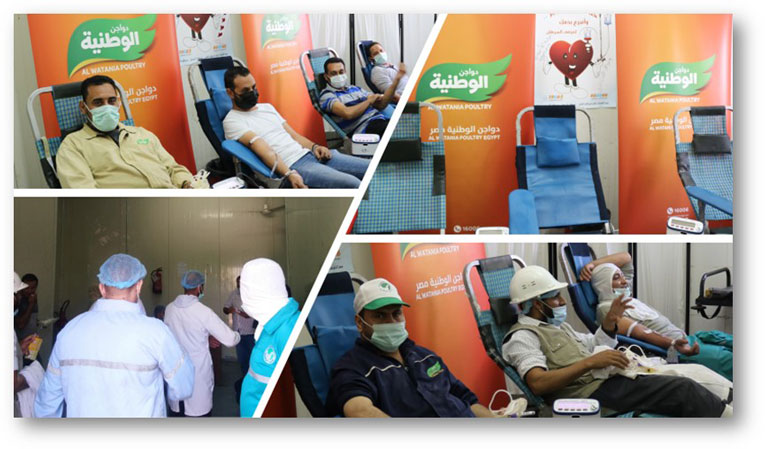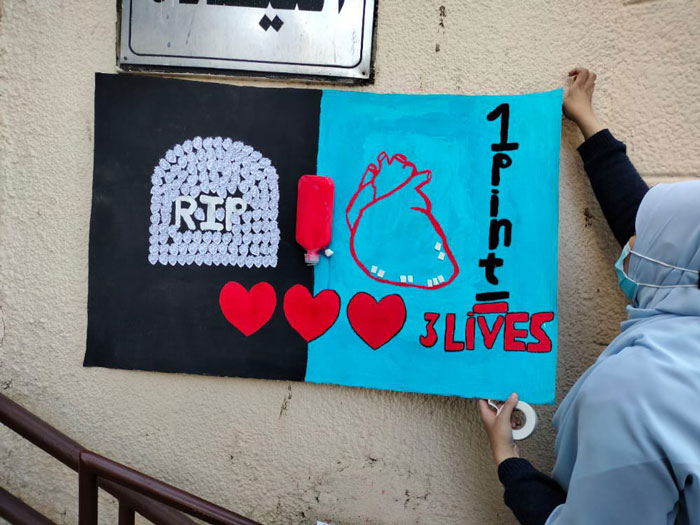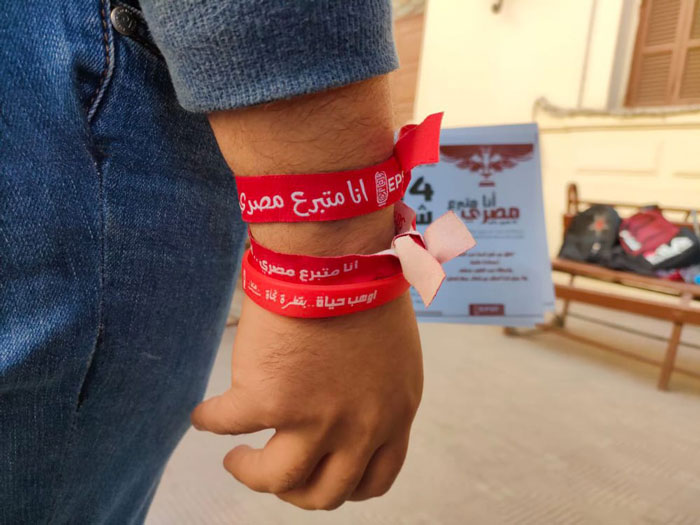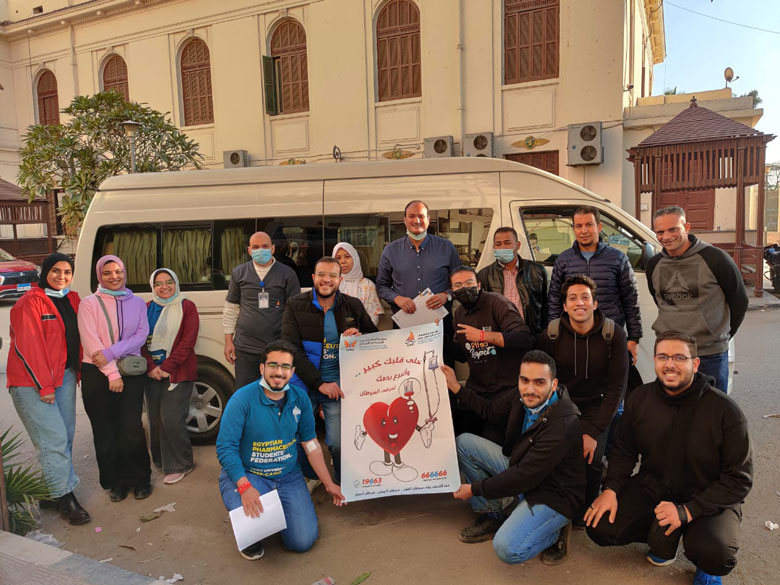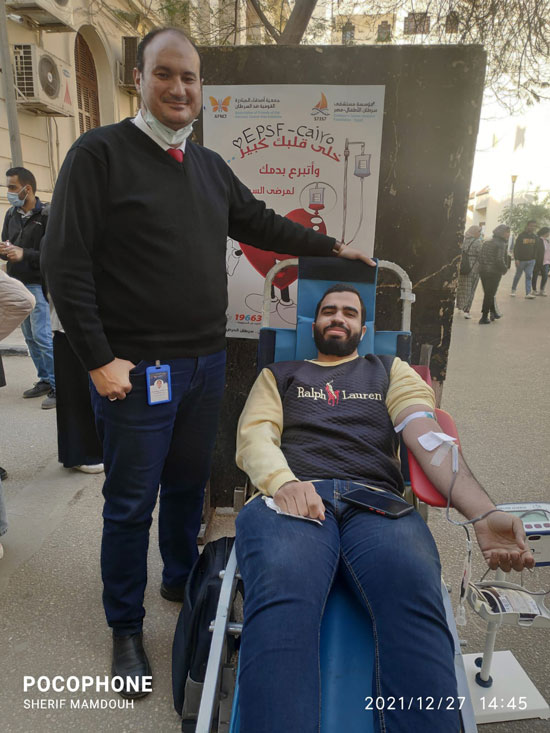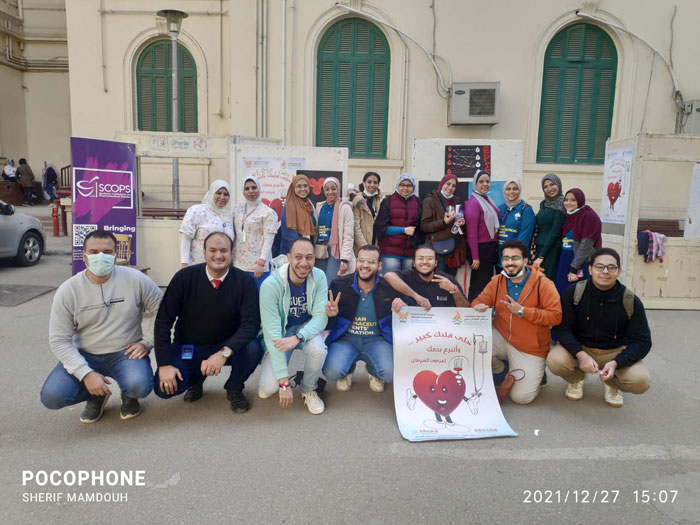


Vision
Encouraging and spreading education about blood donation among Egyptians of all ages and sectors.
Goals:
Currently, the blood donors’ management department organizes campaigns for blood donation and improving transfusion services in national hospitals and medical institutions working in the fields of cancer, general health! and pediatrics such as:
Procedures that should be followed during blood donation
Blood donation should be implemented in phases, to select appropriate donors according to the following criteria:
| The Association of Friends of the National Cancer-free Initiative | |||
| The blood donors’ management department | |||
| Statistics for the number of campaigns and blood bags collected from 1999 to the end of 2016 | |||
| Serial No | Year | Number of blood bags | Number of campaigns along the year |
| 1 | 1999 | 12847 | 216 |
| 2 | 2000 | 15016 | 277 |
| 3 | 2001 | 13734 | 235 |
| 4 | 2002 | 19752 | 239 |
| 5 | 2003 | 18530 | 257 |
| 6 | 2004 | 19465 | 307 |
| 7 | 2005 | 19356 | 277 |
| 8 | 2006 | 18776 | 265 |
| 9 | 2007 | 16188 | 304 |
| 10 | 2008 | 21874 | 431 |
| 11 | 2009 | 32148 | 566 |
| 12 | 2010 | 22961 | 511 |
| 13 | 2011 | 17027 | 350 |
| 14 | 2012 | 17158 | 398 |
| 15 | 2013 | 15987 | 342 |
| 16 | 2014 | 17192 | 419 |
| 17 | 2015 | 17542 | 456 |
| 18 | 2016 | 15229 | 464 |
| 19 | 2017 | 12724 | 409 |
| 20 | 2018 | 9919 | 338 |
| 21 | 2019 | 7838 | 288 |
| 22 | 2020 | 3764 | 150 |
| 23 | 2021 | 2480 | 94 |
| Total | 367507 | 7593 | |
The history of the blood donors’ management department
The beginning:
It all started at the end of the nineties, when we had to deal with serious shortages in the supply of safe blood for cancer patients at the National Cancer Institute, which relied on donors who sell their blood for money. For instance, in 1998, the National Cancer Institute (NCI) spent the amount of L.E.3 millions to ensure its needs of safe blood.
Back then, the AFNCI was prompt to extend support relying itself on best practices and expertise in this field. It resorted to Dr. Adel Ragab, Blood Bank consultant and Dr.Mahmoud Abou El Fettouh, an Egyptian American Expert in collaboration with the American Association of Blood Banks (aabb) to structure a comprehensive program which aimed at organizing and coordinating different blood drives for the provision of the required quantity of free safe blood for the NCI
For the implementation of this program, AFNCI recruited and trained a team of professionals capable of spreading awareness and changing perceptions with respect to blood donation within the community. No campaigns were to take place in streets or public squares; instead safe destinations such as churches, mosques, firms, factories were selected.
Thanks to the generosity and response of blood donors and program sponsors such as Dr Mr. Mohamed Abouel Einein, Chairman of the board of directors of Ceramica Cleopatra Co. who supported the program for 10 consecutive years, the AFNCI was able to meet the needs of the NCI with the provision of a yearly average of 19000 blood sacks.
The blood donors’ management department’s Vision:
Encouraging donors and educating them about the rules of regular donation and spreading the idea among Egyptians of all ages and sectors
The association’s role to achieve this vision
In 1999 the association took over forming a team whose mission is to organize regular blood donation campaigns throughout the year, through a comprehensive training program to encourage donors to donate.
The blood donors’ management department’s goals:
Establishing regular donors database through a program that was applied for the first time in the Middle East, aiming to organize campaigns to offer safe, free of charge, blood to meet the institute’s needs of blood and its components.
Regarding AFNCI’s development of blood transfusion service in the NCI
Since AFNCI took over the responsibility of affording safe, free, blood for cancer patients, it could meet all the institute’s needs of blood, and 50% of its needs of platelets. AFNCI could guaranty high quality safe blood, and eliminate the professional blood sellers’ phenomenon.
The chemotherapy is an essential part in fighting cancer. To boost the results of treatment, the need for blood transfusion increases, this emphasize the importance of the association’s role to offer the institute’s need of blood in order to cover the following needs:
The cooperation between the institute and AFNCI was extended to cover other areas, such as:
Renovating the institute’s blood bank
AFNCI took over renovating the institute’s blood bank through offering:
